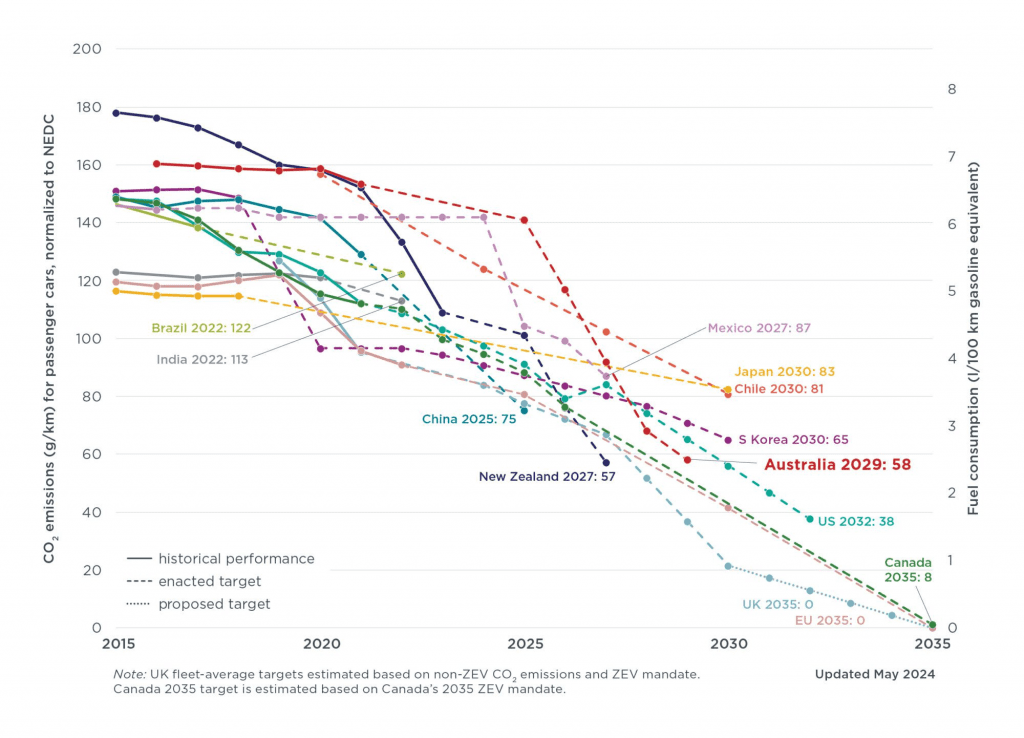On May 16, 2024 the Australian Parliament passed the bill for New Vehicle Efficiency Standard (NVES), which sets the first-ever CO2 emission standards for Australia’s light-duty vehicles. The standards set annual gCO2/km emission targets from 2025 to 2029 for passenger cars, SUVs, and vans.
The adoption of the NVES marks a critical step toward putting Australia on track to meet its decarbonization goals. The standards follow Australia’s first National Electric Vehicle Strategy, which emphasized the adoption of CO2 standards as a key strategy to promote electric vehicle uptake.
The standard will drive down average CO2 emissions from passenger cars (including most SUVs) by about 17 percent per year and from light-commercial vehicles (including utility vehicles, vans, and some heavy SUVs) by about 12 percent per year from 2024 to 2029. Overall, it is expected to lead to a cumulative emissions reduction of 20 million tons through 2030 and 321 million tons through 2050. This translates to more than AU$95 billion in fuel cost savings for consumers and health benefits valued at AU$5 billion through 2050.
The NVES is also expected to increase electric vehicle (EV) sales share of new light-duty sales, including battery-electric and plug-in hybrid electric vehicles. In 2023, approximately 8 percent of light-duty vehicles sold in Australia were EVs, compared to about 21 percent in Europe and about 33 percent in China. The United States had a light-duty EV sales share of about 9 percent in 2023 but has projected that EV sales could reach 53 percent by 2030 and 68 percent by 2032 under its recently released multi-pollutant standards for light-duty vehicles. The European Union and the United Kingdom also have set CO2 standards or zero-emission vehicle mandates that require 100 percent zero-emission vehicle sales by 2035.
The ICCT played an important role in this historic win. Over the past two years, the ICCT closely engaged with Australia’s Ministry of Infrastructure, Transport, Regional Development, Communications and the Arts (MITRDCA), the Electric Vehicle Council, and other stakeholders to support the development and finalization of the policy. This included conducting multiple technical analyses, including a working paper detailing the CO2 impacts of various policy designs; a briefing paper on LDV classification for CO2 standards; and a briefing paper demonstrating that Australia’s existing voluntary emissions reduction targets had not effectively reduced GHG emissions among the Australian fleet.

The ICCT also participated in three public consultations beginning with the national EV strategy, the first round of consultation for standards, and the impact analysis consultation. ICCT’s research and recommendations were reflected in Australia’s final standard.
“As the 10th biggest vehicle market in the world, this final efficiency standard is a clear signal to industry, and an important step for Australia to catch up with the pace of decarbonization in other major markets” said Zifei Yang, Global Passenger Vehicle Lead at the International Council on Clean Transportation.
